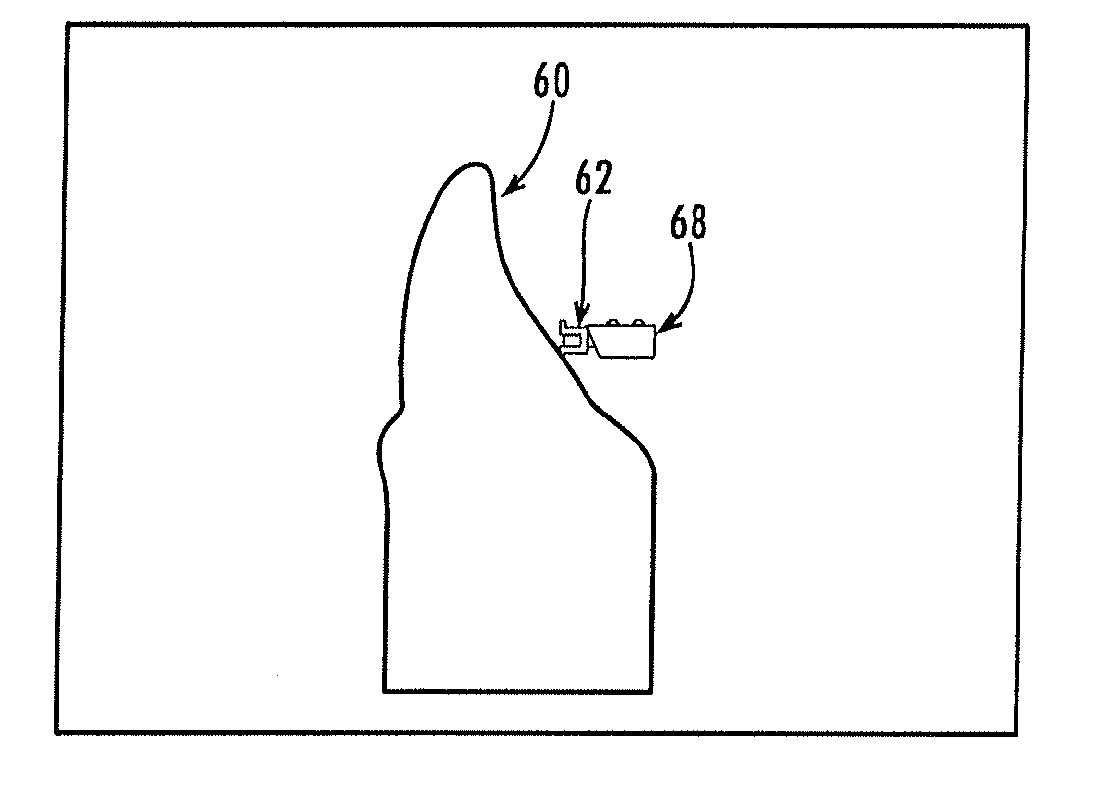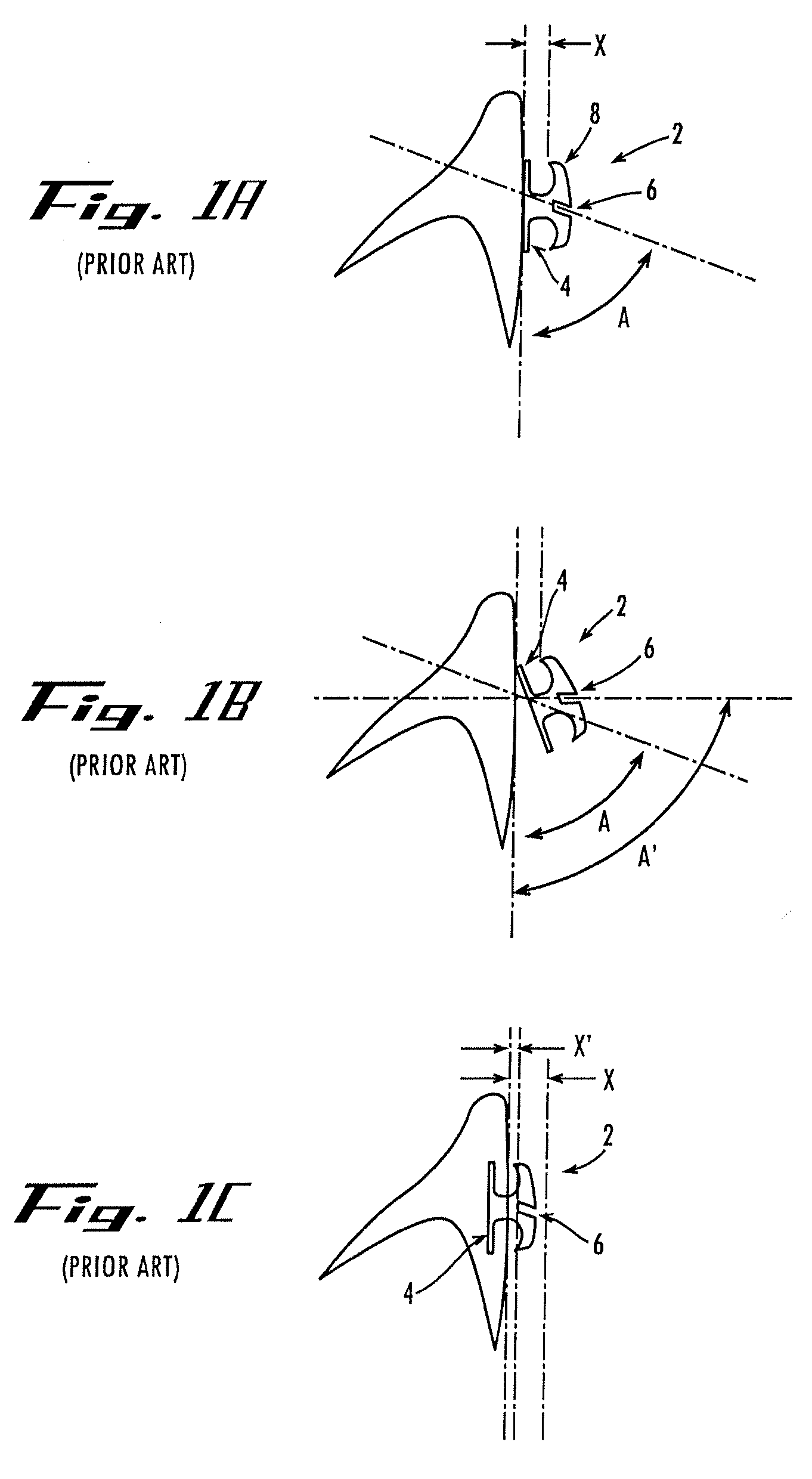However, it is also readily observed upon closer inspection that these mid-facial surfaces do not exactly line up in a straight line with their long axes residing at identical orientations.
This is recognized as a comparatively laborious, slow, unpredictable, and inefficient method.
But when working directly inside the mouth it is very difficult to visualize precise bracket positioning and extremely cumbersome to utilize measuring instruments for determining vertical position.
Because precise positioning of an entire arch of brackets is the exception rather than the norm, the result is a huge compromise in
treatment quality and efficiency.
There are drawbacks to conventional bracket systems, regardless of the attachment method used.
However, their applications are limited to the
posterior teeth due to the necessity of threading the wire through the mesial or distal ends.
It would be an impractical endeavor to attempt threading an arch-shaped wire through an entire
dental arch starting from the most distal
molar.
Not only would the wire initial need to extend into the patients
throat but the lack of a continuously consistent degree of curvature of the
wire segment would preclude
insertion of a wire of significant stiffness.
In addition, the closed-face tube attachment precludes the placement of significant arch-wire bends, therefore, it is only practical if the attachment
system is positioned with high precision and coordination.
As such, conventional bracket systems are designed to accommodate one bracket per tooth on either the facial or lingual side, but, as a practical matter, not both.
But a base of any substantial length compromises the ability to custom-coordinate positioning of a bracket in particular ways.
For example, if the operator desires to place the slot at an alternative facio-lingual angle, the base interferes and creates an undesirable lever arm that necessitates displacement of the slot in an unfavorable way, a greater distance from the
tooth surface.
And even when the bracket can be positioned with the base flat against the tooth, the width of conventional brackets alone makes them comparably protrusive, when most patients would prefer them to be minimally protrusive.
In addition, because lingual
side tooth anatomy is more highly variable among individual tooth types compared with facial side
anatomy, using a “base-dependent”
positioning system to achieve a “straight-wire” result is even less efficient than the traditional facial bracket
system.
That is, a “fixed bracket shape with a base” designed for the lingual
tooth surface is remarkably less efficient at achieving coordination of slot positions such that a straight wire could then deflect the teeth to the desired positions.
Because of this inefficiency, greater effort and greater unpredictability are realized by the operator who attempts to bend arch-wire to compensate for poorly coordinated lingual bracket slots.
While this can theoretically be accomplished using a traditional bracket with a base and protruding tie-wings, the degree of protrusion and irregularity of shape (roughness) creates substantial discomfort for the patient.
For this reason and others, lingual bracket systems have seen only very limited applications in
orthodontics.
In addition, the desirability of adjustability has lead to the predominant use of open-faced slots.
In fact, open-faced slots are a practical necessity because of the obvious problem that a wire possessing compensating bends of significant size cannot be threaded through tubes of small cross-section and the obvious problems with
insertion of full-length arch-wires through a closed-face bracket
system.
And the tie-wings create a relatively bulky, high profile bracket system and generally result in a highly irregular surface against which lips, cheeks, and tongue will rub and create discomfort.
Because of the cost associated with the vast inventory of brackets required, most operators use a manufacturer-specified shape (not a shape customized to the unique dental
anatomy of the patient) for each tooth.
Existing brackets do not allow for minimizing the profile and protuberances, which would create a far more comfortable lingual bracket system.
The necessity of having tie-wings to engage
ligature ties for the purpose of holding the wire engaged in the slot means that uncomfortably large, irregular protuberances are unavoidable.
 Login to View More
Login to View More  Login to View More
Login to View More 


